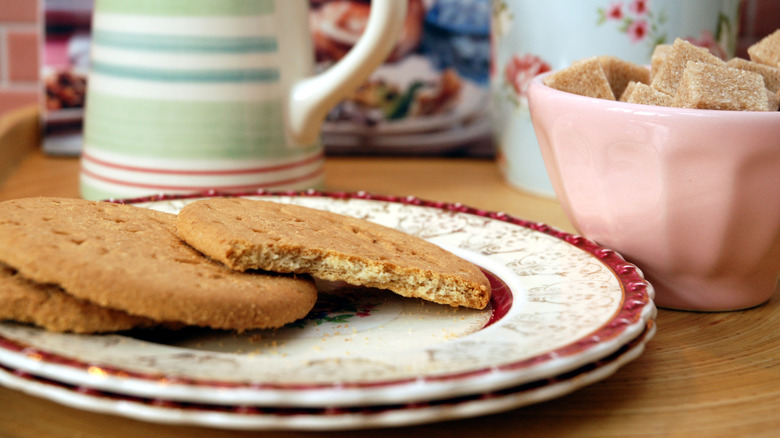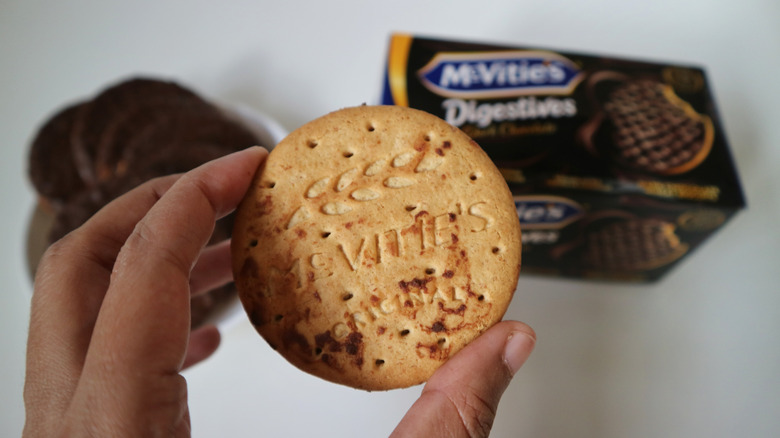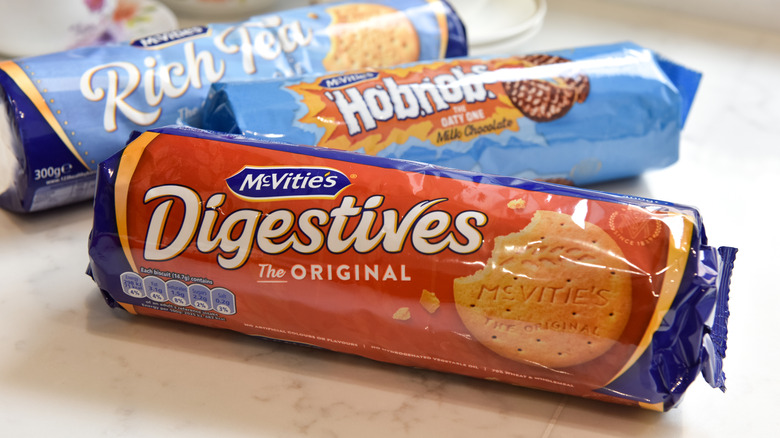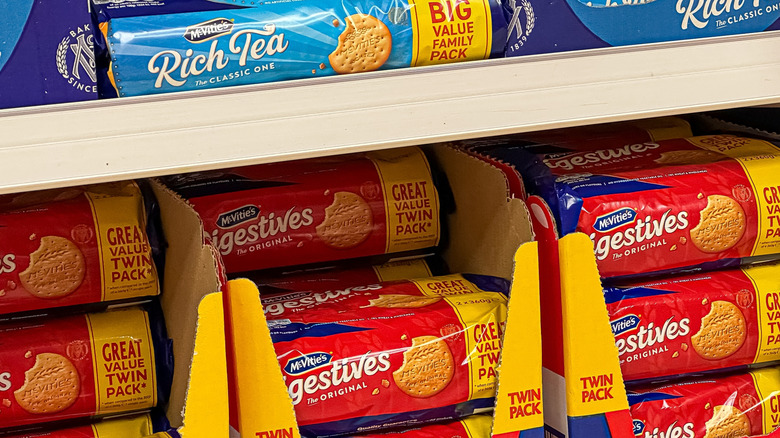What Are Digestive Biscuits And What Do They Taste Like?
The first time I saw a package of "digestives" next to the cookies at the grocery store, the label called to mind upset stomach remedies more than the promise of a delicious snack. Digestive biscuits are simply semi-sweet biscuits that have a slightly raspy texture to them — a good treat when you want something somewhat neutral to go with your coffee or tea. Why does such a cookie sound so unfamiliar to Americans?
While digestives don't sound frilly on paper, they are satisfying and comforting to bite down on — a "session" cookie, unlike most of the ones you'll find at the store. Part of what makes digestive biscuits so interesting is that while they're part of daily life in the United Kingdom, their popularity hasn't expanded to the U.S. market.
What exactly does digestive mean, anyway?
The "digestive" part of digestive biscuits makes these cookies sound like somewhat of a health food. But the name actually refers to one of the crucial ingredients in the batter, sodium bicarbonate (aka baking soda), which is also known to briefly alleviate an upset stomach. (Tums is primarily made of baking soda, a known acid reducer.) The cookies are also made with whole wheat flour, which has more fiber than all-purpose flour, adding bulkiness to the final product.
When it comes down to it, though, they're similar to graham crackers; I'd take any health claims with a grain of salt.
How do digestive biscuits taste?
Compared to most cookies, digestives are pretty tame in terms of sweetness, but you wouldn't call them bland. I'd almost say they've got a nourishing quality to them, even if they're pretty much just cookies. It's because they're not too sweet that you feel like you could eat a whole sleeve of them and still feel great.
Where are digestive biscuits most popular?
Digestives are extremely popular in the United Kingdom, a common snack to pair with tea. The biggest brand, McVitie's, is the UK's bestseller. This makes sense, since the company is actually the one that invented the biscuits in the first place.
McVitie's is named after Scottish founder Robert McVitie, who was born in 1809, according to the company's website. McVitie would go on to open bakeries and, eventually, factories where he produced his baked goods. The digestive biscuit wouldn't be developed until 1892, when employee Sir Alexander Grant came up with the recipe. It hasn't changed since, and by the looks of it, it won't need to anytime soon.
Where can you get digestive biscuits?
In the United States, you can typically get digestive biscuits at most major grocery stores near the cookies and the crackers, though the selection is usually fairly small. My general theory is that they're not quite sweet enough for the American palate, when compared to mass-produced icons like Oreos.
But there are chocolate-topped McVitie's, which are much richer than the classic. My preferred digestives feature a blend of caramel and chocolate on top, which are even sweeter than the chocolate ones. There are plenty of other brands available as well; beyond McVitie's, there's also Kedem, a brand that is both kosher and reasonably priced.
Digestives make for a really good snack any time of the day without feeling too decadent (even if you're getting the chocolate-covered ones). If you're baking anything that calls for a graham cracker crust, such as a cheesecake or a key lime pie, you can use the biscuits for those purposes too. They're less rigid than graham crackers, which contributes to a nice smooth bite.
We already know that we can't compete with Britain's chocolate. We might as well admit defeat in the area of digestives, too, and embrace McVitie's as one of the UK's greatest exports.




